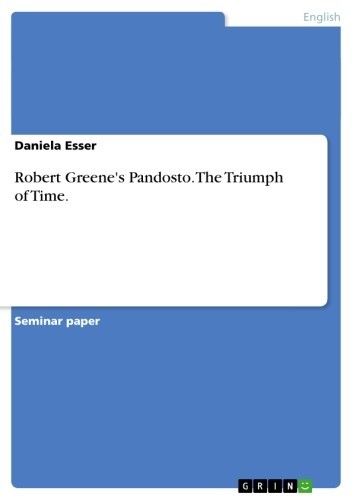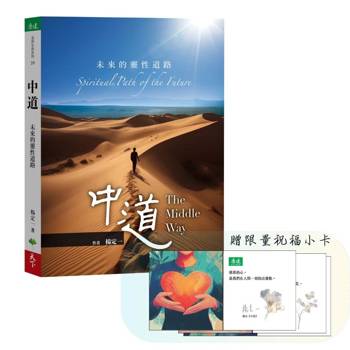| FindBook |
|
有 1 項符合
daniela esser的圖書 |
 |
$ 392 電子書 | Robert Greene's Pandosto. The Triumph of Time.
作者:Daniela Esser 出版社:GRIN Publishing 出版日期:2002-09-05 語言:英文  看圖書介紹 看圖書介紹
|
|
|
Seminar paper from the year 2001 in the subject English Language and Literature Studies - Literature, grade: very good, University of Paderborn (Anglistics), course: Hauptseminar William Shakespeare, 13 entries in the bibliography, language: English, abstract: Robert Greene was one of the most popular English prose writers of the late 16th century and Shakespeare's most successful predecessor in blank-verse romantic comedy. He was also one of the first professional writers and among the earliest English autobiographers1. His early prose works show the influence of John Lyly and the Euphuistic style.2 His novella Pandosto. The Triumph of time3 (first extant edition 1588) is a prose pastoral romance based on Greek tradition that provided Shakespeare with the plot of The Winter's Tale. The running title of the romance, however, is 'The History of Dorastus and Fawnia'. The happy love story of Dorastus and Fawnia is framed by the tragic story of the jealous Pandosto, king of Bohemia, and his wife Bellaria. Pandosto's jealousy is based on a misunderstanding and leads to the abandonment of his child Fawnia and to the death of his beloved wife Bellaria. Pandosto's life is therefore determined by grief, and he cannot even find his daughter. Fawnia, however, is found by a shepherd and is raised by him as if it was his child. As time goes by, the son of Egistus, king of Sicilia, falls in love with the shepherdess Fawnia who turns out to be a lost princess. So this love story ends happily, and as Greene already claims in the title, truth may be concealed yet time brings the truth to light: 'Temporis filia veritas' - truth is the daughter of time.4 With this structural arrangement, the second (happy) generation, namely Dorastus and Fawnia, is framed within the story of the first (unhappy) generation.5 With his depiction of two worlds that have fortune as their main agent, Greene proposes a world picture which was opposed to that of the prevailing moral. [...] 1 Greene's last work, The repentance of Robert Greene (1592), is totally autobiographical. See Davis, Walter R.: Idea and Act in Elizabethan fiction. Princeton: Princeton University Press, 1969, p. 183. 2 See Salzman, Paul: English Prose Fiction 1558 - 1700. A critical history. New York: Oxford University Press, 1985. p. 59. 3 This paper is based on the edition given in Shakespeare, William: The Winter's Tale. Ed. J. H. P. Pafford. The Arden Shakespeare. Walton-on-Thames: Thomas Nelson and Sons Ltd.,[...] 4 See An Anthology of Elizabethan Prose Fiction. Ed. Paul Salzman. Oxford: Oxford University Press, 1987, p. 399. 5 See Newcomb, Lori Humphrey: ' `Social Things`: The production of popular culture in the reception of Robert Greene's Pandosto.' ELH 4/1994, p. 757.
|







![塔木德:猶太人的致富聖經[修訂版]:1000多年來帶領猶太人快速累積財富的神祕經典 塔木德:猶太人的致富聖經[修訂版]:1000多年來帶領猶太人快速累積財富的神祕經典](https://media.taaze.tw/showLargeImage.html?sc=11100697818)


